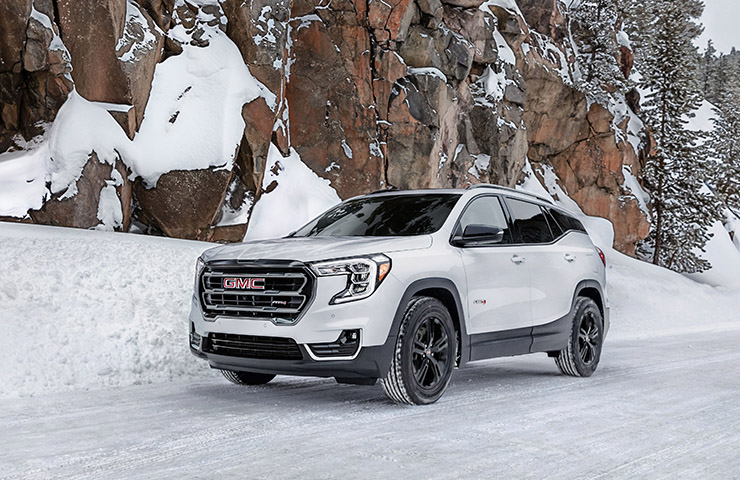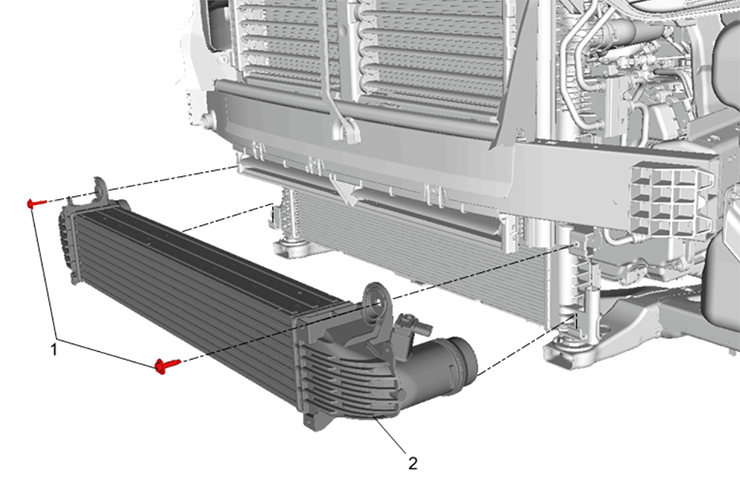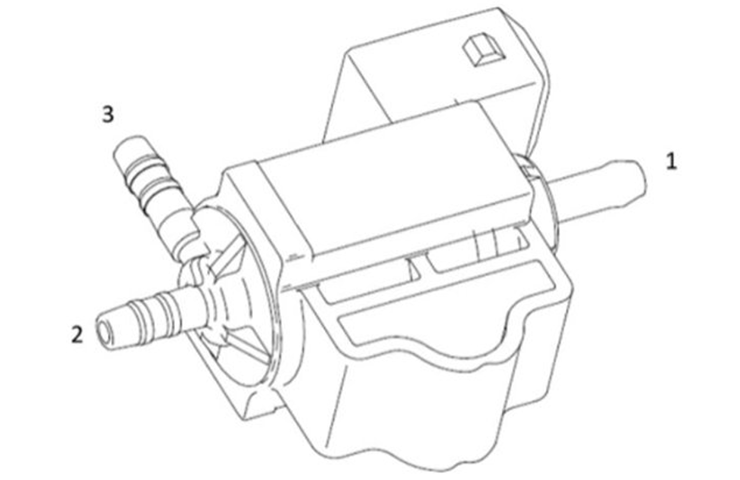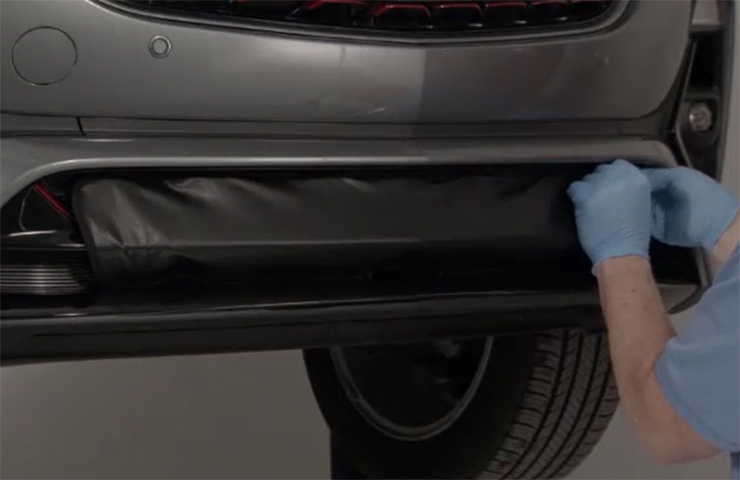In extremely cold weather conditions (0°F / –18°C or less), the charge air cooler (CAC) on some turbocharged engines may experience icing due to moisture build-up, restricting air flow and resulting in possible loss of power, hesitation on acceleration and other poor performance conditions. (Fig. 5) These conditions may be present within the first 10–15 minutes of vehicle operation in cold weather and then diminish after driving for a period of time.
CAC icing may be more likely on smaller displacement engines where an air-to-air charge air cooler is used. Affected models include:
- 2018-2022 Equinox and Terrain models equipped with the 1.5L engine (RPO LYX)
- 2020-2022 Encore GX and 2021-2022 Trailblazer models equipped with the 1.2L engine (RPO LIH) or 1.3L engine (RPO L3T)
- 2016-2019 Cruze models equipped with the 1.4L engine (RPO LE2)
 Fig. 5
Fig. 5
Several DTCs also may be set, depending on the engine, including DTCs P0299 (Engine Underboost), P2227 (Barometric Pressure Sensor Performance), P0300 (Engine Misfire Detected), P0234 (Engine Overboost), P0236 (Turbocharger Boost Sensor Performance), or P00C7 (Intake Air Pressure Measurement System). Under heavy acceleration, moisture can be drawn into the engine, which would cause DTC P0300. In cold temperatures, ambient and PCV moisture can freeze in the charge air cooler, which would restrict flow and cause DTCs P0299 and/or P0234.
TIP: On some 1.2L and 1.3L engines, these conditions may cause an increase in crankcase pressure, creating potential oil leaks at seals and gaskets.
Inspect the Air Induction System
If these conditions are found, inspect the air induction system, including the charge air cooler (Fig. 6), for signs of ice restricting airflow or covering any related pressure sensors. Any ice accumulation should be allowed to melt so that moisture can be drained from the induction system, including the charge air cooler, without component damage.
 Fig. 6
Fig. 6
In addition, some 1.4L and 1.5L engines operated in conditions that cause CAC freezing may have frozen oil/water contaminant found in the turbocharger wastegate regulator solenoid valve (TCV). (Fig. 7) If DTC P0234 or P0299 is set, refer to #PIP5812C for turbocharger wastegate regulator solenoid valve inspection. Cleaning or replacing the TCV solenoid may be needed.
 Fig. 7
Fig. 7
New Calibration
A new Engine Control Module (ECM) calibration is available to address the potential for ice to build up inside the charge air cooler. The new calibration will enable a revised transmission shift pattern during cold weather that does not use overdrive as frequently.
TIP: After ECM reprogramming, elevated engine RPMs may be noticed during highway driving. Be sure to share with customers the effects of the new ECM calibration on transmission shift patterns at high speeds during cold weather.
Follow all recommended programming guidelines in the appropriate Service Information. Refer to K20 Engine Control Module: Programming and Setup. The calibration should only be programmed to address issues related to charge air cooler icing occurring on vehicles operated in cold climates.
For additional information, refer to the following Bulletins: #22-NA-002, #22-NA-007, #21-NA-293, #18-NA-069, #18-NA-020 and #17-NA-221.
In Canada, a winter cover also may be available for some models. (Fig. 8) Refer to Bulletin #20-NA-028 for more details.
 Fig. 8
Fig. 8
– Thanks to Matt Gager


















